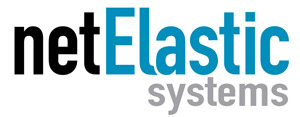In an IHS Markit survey earlier this year, 92% of service providers with broadband networks said they will deploy, or plan to deploy Virtual Broadband Network Gateways (vBNG). This finding underscores a real intent on the part of broadband operators to migrate to vBNG.
As carriers continue to transform their networks, there are many customer and technology trends driving the adoption of virtual BNG:
- Bandwidth demand continues to increase exponentially. Last year global IP traffic consumed by individuals surpassed one Zettabyte (one Zettabyte is one billion Terabytes), and is forecast to reach two Zettabytes of annual traffic by 2020. Unfortunately, legacy hardware-based BNGs were built for yesterday’s less dynamic internet traffic.

- Video is the major driver of bandwidth demand and is shaping the future of network infrastructure. According to an annual forecast conducted by Cisco’s Visual Networking Index (VNI), internet video traffic will grow 400% from 2017 to 2022. This massive demand for video is putting pressure on broadband providers to repeatedly upgrade their network infrastructure.
- Cost and complexity of legacy network upgrades. Increasing bandwidth demand requires greater network scalability and hardware-based BNGs are difficult to scale, expensive, and inflexible. With legacy network equipment, carriers have traditionally overbuilt network capacity to keep up with increasing demand, which is both inefficient and costly.
- Deployment flexibility. Customers want new services on demand, so developing and deploying new services faster is a requirement for service providers today.
- White box server adoption continues to grow and provides carriers with lower costs, greater flexibility, and more customization. Service providers are focused on avoiding the problems of vendor lock-in and white box servers free them from proprietary systems.
Key Points to Consider in Selecting a Virtual BNG In traditional broadband networks, the BNG function resides in physical edge routers built by major router manufacturers. These same router manufacturers have all released virtualized, software-only versions of router functions, including virtual BNGs. However, hardware router manufacturers still want to maintain their hardware margins, even when selling virtual BNGs.
Virtual BNGs developed by non-router manufacturers have also been introduced, but these first-generation vBNGs typically lack the throughput necessary for video-dominated internet traffic. Given this, what key factors should you look for in a virtual BNG?
Purpose-Built Software
Software-defined networking (SDN) is fundamentally changing the network. The traditional network model was to increase network capacity by adding physical (and usually proprietary) network appliances, which is time consuming and costly, and will not keep pace with exploding internet video traffic and bandwidth demand.
netElastic Virtual BNG has been purpose-built to deliver the scalability and performance needed for today’s video-dominated traffic, and to help service providers make their networks more flexible and dynamic to prepare for future bandwidth growth.
Network Scalability with Control and User Plane Separation (CUPS)
Traditional BNGs with control and data planes coupled together act as both a gateway for user access authentication and an IP network’s Layer 3 edge, and this interdependent relationship makes it difficult for either plane to reach maximum performance.
netElastic’s massively scalable network architecture with decoupled control and data planes allows both planes to be scaled independently based on network and end-user demands, and they can also run in different hosts to take advantage of CPU cores to maximize performance and scalability. vBNG also takes advantage of the ever-increasing power of white-box servers to provide the elastic scalability that carriers need.
Performance Counts 
To meet the needs of next-generation networks, service providers should look for a virtual BNG that delivers high-performance (which eliminates many first-generation vBNGs).
netElastic vBNG delivers high performance with a highly optimized data plane and packet flows written specifically to leverage DPDK functionality. Decoupling of the control plane and data plane also enables flexible capacity expansion without restrictions from either plane, and the netElastic vBNG user plane can run on white box SDN switches for maximum amounts of subscriber connectivity and user plane throughput.
Cost Savings
While internet video traffic on telecom networks is growing exponentially, telecom revenue is growing very slowly. And this trend will diminish service provider profitability if service providers keep building networks in the same way.
netElastic’s software-based approach and industry-leading scalability can help service providers save up to 70% in costs compared to hardware-based BNGs, and netElastic also aligns carrier costs with revenue, enabling carriers to start small and grow big at their own pace.
Is Now the Time?
Today, broadband networks are facing unprecedented customer demands and challenges, and carriers are turning to virtual BNGs to help transform their networks. netElastic vBNG was purpose-built to help carriers meet current and future bandwidth demands with massive scalability, high performance, and lower costs. To learn more, please download a copy of Intel and netElastic Scale vBNG for Ultra Broadband Video Services.


